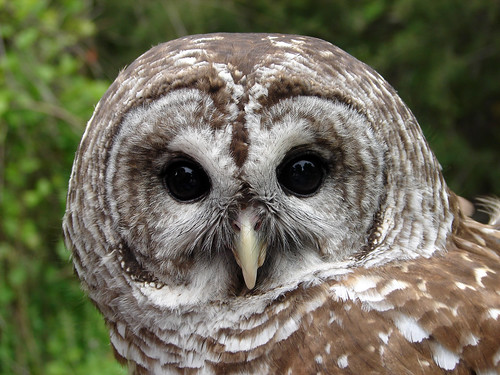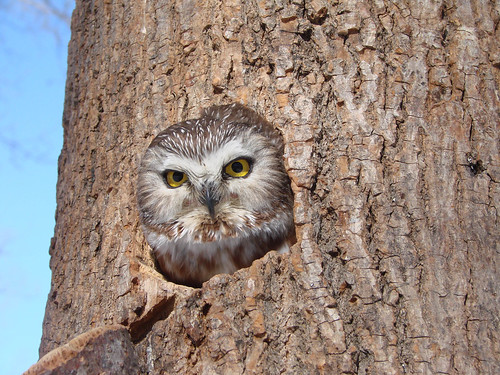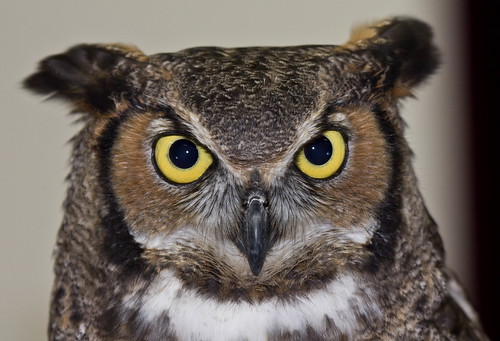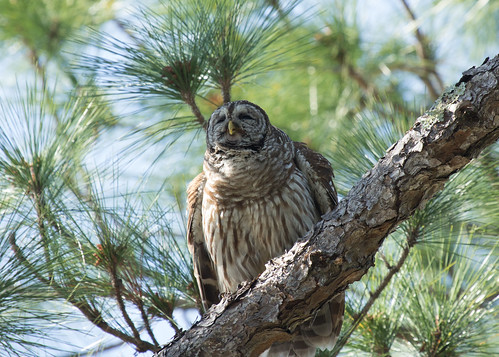Of all the birds in the known universe, the species that have elicited the most fear and awe in human beings, inspiring mythology and folklore in virtually every human culture, are the owls. Whether we’ve never seen one before or see them often, virtually all of us are filled with wonder when we behold one. I encountered a saw-whet owl hunting in my backyard in the early 90s, and recounted it in an old For the Birds program, writing:
I gazed at him from the porch and our eyes met momentarily, but people hold a lot less interest for a Saw-whet than a Saw-whet holds for us. He quickly broke eye contact and went back to scrutinizing the ground, knowing that a single deer mouse would do him a lot more good than a person ever has. Some people look up at the stars, so huge, so far away, so brilliant, so unreachable, to remind themselves of our insignificance in the overall scheme of the universe. But I can see that insignificance reflected in the eyes of a Saw-whet Owl.
That was hardly a scientific observation, but even within the realm of science, owls hold mysteries. That little Saw-whet’s eyes, like the eyes of a great many owls, are yellow. But why?
Even among scientists, our guesses are just speculation. My personal theory is that owls have yellow eyes to look more catlike. To enhance that cat-like appearance, some yellow-eyed owls have feather tufts sticking up on their heads exactly where cats’ ears are positioned.
How is looking like a cat useful? A cat can reach out and scratch a larger predator before the opponent is close enough to chomp at it. When an owl drops down to grab prey, a larger predator may hesitate a moment if it thinks it has come upon a cat. That moment may be just enough time for the owl to fly off.
That theory is hardly provable, but neither are other theories about owl eyes. The Owls Trust, a UK organization, explains that owls with yellow eyes hunt mainly during day and owls with dark eyes at night. But yellow-eyed Saw-whet, Boreal, and Screech-Owls are almost exclusively nocturnal unless they’re starving, and the north country owl most active by day is our only brown-eyed species, the Barred Owl.
Only four owls of North America have brown eyes: the widespread Barn Owl, with a range that just barely extends into the Midwest, the Flammulated Owl of western pine forests, our Barred Owl, and the closely related Spotted Owl of Western old forests. I’ve found many Barred Owls in daytime over the years, hunting and hooting. There are features of every owl that I love—the Barred is a favorite for two reasons: First because I can easily mimic the Who cooks for you-all? calls of adult males (females have more vibrato than my voice can imitate), and so I’ve called in Barred Owls almost every time I’ve ever taken people out owling. My Barred Owl calls were the main reason I was a winner in an American Ornithologists’ Union’s bird-calling contest in the 90s.
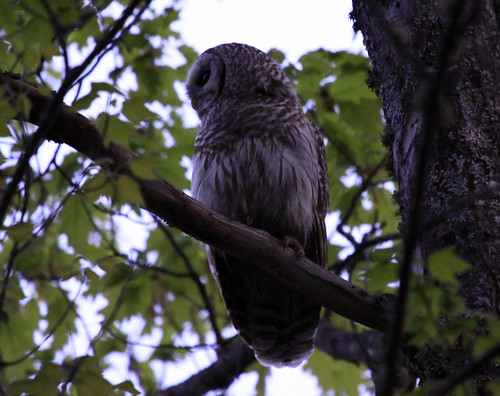 |
| One of many Barred Owls I called in during "owl prowls," this one near Trees for Tomorrow in Eagle River, Wisconsin, in 2010. |
The other reason that I so love Barred Owls is their brown eyes. Chickadees, of course, also have brown eyes, as do Blue Jays, robins, Ruby-throated Hummingbirds, and a host of other species, but the Barred Owl’s big brown eyes are especially arresting. I was in high school when Van Morrison’s song Brown Eyed Girl came out, and this brown-eyed girl loved that song. So of course, every time I see my brown-eyed owl, that song pops into my head. Great Horned Owls start nesting right around Valentine’s Day, but this year I’m celebrating the romantic holiday thinking about my brown-eyed owl.
